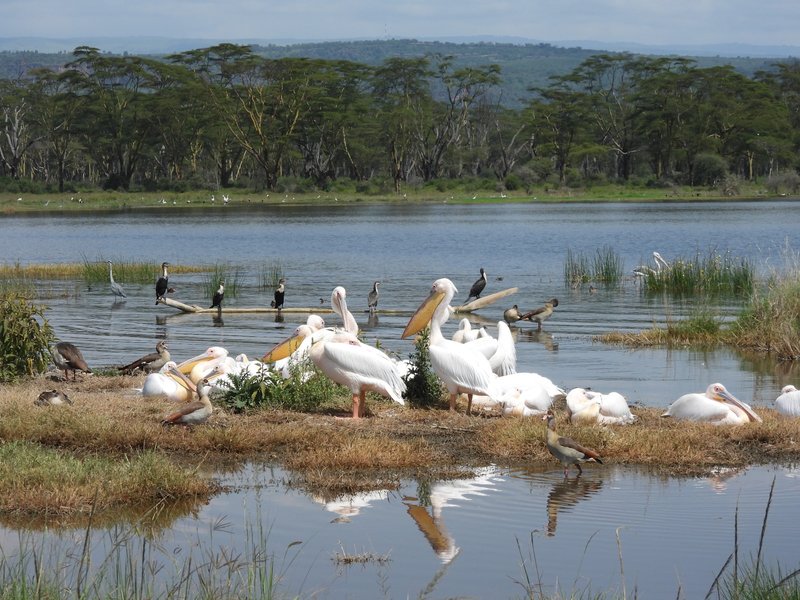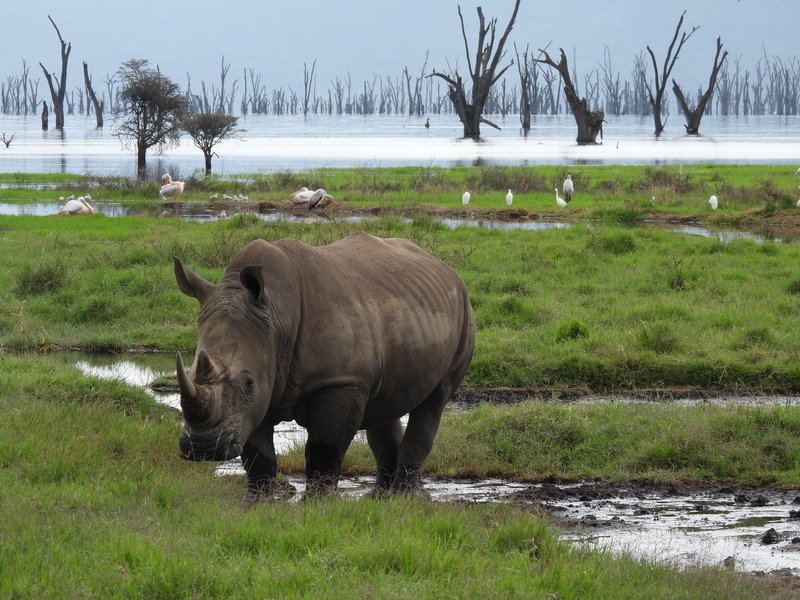It’s a miracle that this WHS is not In Danger, or that this issue is not being discussed. Since approximately 2015, the Kenyan Lake System has experienced severe flooding. The causes are not yet fully understood, but higher annual rainfall, degradation of the surrounding land due to deforestation and urbanization, and even possibly ‘closing’ of the tectonic plates under the Rift come into play. The floodings keep the flamingoes away from their once favourite habitat as they cannot wade in deep waters and the level of water salinity has changed as well. All 3 criteria that make up the Lake System’s OUV are at least partly related to those flamingoes (“the single most important foraging site for the Lesser Flamingo in the world with about 1.5 million individuals moving from one lake to the other”), and these numbers simply are not present anymore. To make matters worse, the smallest of the included lakes, Elementaita, seems already beyond repair according to IUCN in its Outlook 2020 because of uncontrolled development of its surroundings and the partial loss of Ramsar conservation status.
Kenya has submitted a State of Conservation report of the Lakes to this year's WHC, and with funding from the Dutch government, hopes to fulfill all recommendations that it hasn’t been able to accomplish on its own for the past decade (the additional funding is 45k USD, which to me seems like a drop in the ocean).

I visited the area via a half-day private safari in Lake Nakuru National Park. The city of Nakuru now lies right at the edge of the park, so it doesn’t take a lot of effort to get there. Just behind the gates, it already becomes clear what effects the flooding has had on Lake Nakuru. A forest of dead trees is standing all along the shoreline, and even some electricity masts are now inside the lake. The park authorities had to create a new road as well to accommodate visitors. And it isn’t possible anymore to do a full loop by car around the lake, we got to about 60% and then turned around.
There aren’t many roads to follow in the park, so it is recommended to visit on a weekday, as it will get crowded on the weekends with Kenyan day trippers. All animals are clearly used to people driving by quite closely, even the usually so skittish Impalas didn’t blink an eye. With the flamingoes mostly gone, the pelicans are now the major species at the lake. On land, the stars are the Rhinos. Lake Nakuru NP has both white and black rhinos – they were introduced here in 1984 and have thrived since the park is fenced and there is no poaching. They are easily seen and often move around in small groups. Other notable sightings during my game drive included some “whitesocked” Rothschild’s giraffes and a sleeping male lion.

The overall scenery has its ups and downs – there are plenty of boring stretches, but especially at the lakeside, also a few excellent ones. My best experience of the Great Rift Valley, however, had been the day before, when my matatu from the Mount Kenya area to Nakuru launched itself at breakneck speed into this depression.
Lake Nakuru National Park is a ‘Premium Park’ within the Kenyan Park system, a status that only Amboseli holds as well. This comes with a hefty 60 USD entry fee for foreigners. Now I am not the one to complain about the pricing of natural sites when part of the money goes to conservation. But something is “off” here. The Premium parks are considered to have “higher quality and superior facilities”, but Lake Nakuru National Park does very poorly on our WHS Visitor Commandments scorecard. There’s no visitor center or any other information available on site about its value, the entrance fee is too high, and (of course) there’s no WH Plaque. The Main Gate entrance is probably even less glamorous than that of the minor Ngare Ndare Forest: it’s just a shack, and I felt sorry for the woman who had to sit there all day to check the (online) tickets. I saw no map of the park, and there were no checks conducted on whether we were bringing in single-use plastics such as plastic water bottles (which are forbidden in all Kenyan parks).
More on
Comments
No comments yet.
